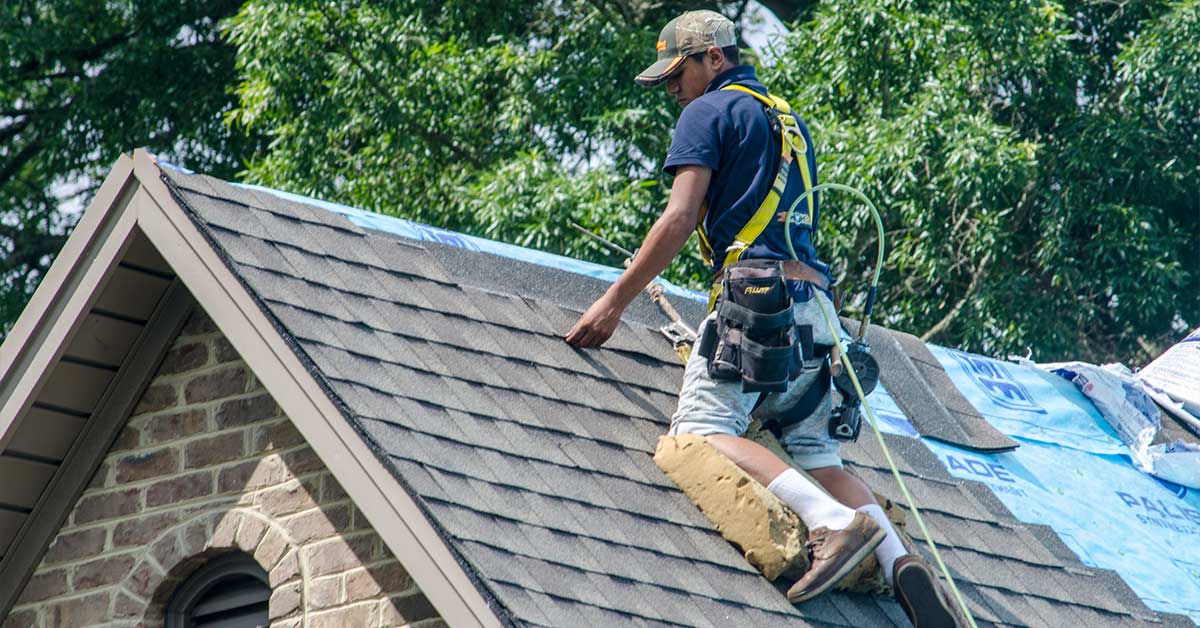
21 Sep. 24
Longevity and Durability: Choosing a Roof Installation That Will Last
Longevity and Durability: Choosing a Roof Installation That Will Last
As a homeowner, investing in a roof installation is one of the most significant decisions you’ll have to make for your property. With so many options available, it can be overwhelming to find the right roofing solution that not only looks aesthetically pleasing but also stands the test of time. After all, no one wants to deal with the hassle and cost of constantly repairing or replacing their roof. This is why choosing a durable and long-lasting roof should be a top priority when considering any exterior renovations. In this blog post, we’ll delve into the key factors you need to consider when selecting a roof installation that will provide longevity and durability for your home. So if you’re in the market for a new roof or simply curious about what makes certain roofs more durable than others, keep reading!
Roofing material durability
As one of the most critical components of a building structure, the roofing material plays a crucial role in protecting the property from external factors such as weather damage, physical impact, and insulating the interior. Choosing the right type of roofing material is, therefore, a critical decision that requires a thorough evaluation of factors, such as lifespan and weather resistance, among others. When considering the durability of roofing material, it is essential to look at the specific climatic conditions of the region in which the building is located. For instance, Asphalt shingles, while relatively affordable, may be susceptible to damage due to high winds, heavy rain, and extreme weather conditions. In contrast, Metal roofing offers outstanding durability, with a lifespan of up to 50 years and exceptional weather resistance, making it an ideal choice for regions that experience extreme weather conditions. Additionally, Tile roofing is a popular choice for its elegance and longevity, boasting a lifespan of up to 100 years and excellent resistance to fire, wind, and hail. Irrespective of the roofing material choice, regular maintenance and inspection are crucial in ensuring the integrity and longevity of the roof. By carefully evaluating the specific roofing material’s lifespan and weather resistance, property owners can make an informed decision and ensure that their investment is well protected.

Roof Installation
Roof pitch and ventilation
Roof pitch and ventilation play vital roles in the overall health and longevity of any roofing system. Ensuring the proper slope and airflow are imperative to prevent the damaging effects of moisture from infiltrating your home. This occurs because stagnant air and moisture can accumulate in an improperly vented and sloped roof structure, leading to harmful mold and mildew growth, and ultimately compromising the structural integrity of your roof. Therefore, it is crucial to consider both the pitch and ventilation of your roof during the installation process, as well as any time you plan to do any major roofing work. Expert roofing contractors understand that improper ventilation and slope can lead to major roofing headaches in the long run, and will take care to inspect and correct any issue before it turns into a large-scale problem. So, whether you are installing a new roof or maintaining an existing one, be sure to give careful attention to the pitch and ventilation of your roofing system, to ensure its longevity and protect your home from dangerous moisture damage.
Underlayment and moisture barriers
Underlayment and moisture barriers are essential components of any roofing system. They provide an added layer of protection that enhances the durability and longevity of the structure. High-quality underlayment can effectively guard against moisture, wind, and even UV radiation, preventing damage to the roof and water from penetrating the home’s interior. Besides, moisture barriers provide an essential function in preventing moisture from undermining the roof’s integrity, leading to costly leaks and damage. Choosing the right underlayment and moisture barrier can help create a robust barrier against the elements, ensuring the roof stands the test of time while reducing energy consumption. It’s worth noting that the right choice and installation could ultimately save homeowners thousands of dollars by preventing costly repairs and keeping their home’s interiors safe. In summary, investing in proper underlayment and moisture barrier is a key decision that will pay off all the way.
Fastener selection
Fastener selection is a critical aspect of any construction project. Choosing the right type of nails is essential when it comes to ensuring the durability and longevity of the finished structure. Hot-dipped galvanized or stainless steel nails are the preferred option for many construction professionals due to their inherent resistance to rust and corrosion. These nails are specially treated to prevent rusting, making them ideal for use in harsh climates where moisture and humidity are common. Hot-dipped galvanized nails are the ideal choice for projects located in coastal areas or those exposed to saltwater spray, as they offer superior resistance to rust and corrosion. Stainless steel nails, on the other hand, are more suitable for projects located in dry, arid climates. Choosing the right type of nail for your construction project could mean the difference between a structure that lasts for decades and one that requires frequent repairs or replacement. By taking the time to select the appropriate nails, you can ensure that your project will stand the test of time and withstand the elements, no matter where it is located.
Skylight and vent flashing
Skylight and vent flashing play a critical role in protecting the roof against water damage. Flashing is essential in areas where the roofing material meets a vertical surface or protrusion, such as vent pipes, skylights, chimneys, and walls. Without proper flashing, water can easily penetrate these areas, causing leaks and moisture damage to the underlying structure. That is why it is essential to ensure that flashing is properly installed and sealed. Skylight and vent flashing are commonly made of rust-resistant metals like aluminum, copper, and stainless steel, which can withstand exposure to the elements and effectively channel moisture away from the roof’s surface. With the correct installation and sealant, these materials can provide long-lasting protection against leaks and water damage. Investing in quality skylight and vent flashing can not only save you money on repairs but also extend the life of your roof.

Roof Installation
Inspecting for wear
Inspecting for wear is a vital aspect of any maintenance program, and it must be done correctly. When it comes to checking for curling, cracking, or damage – particularly near the end of the material lifespan – attention to detail and focus is paramount. Deeper inspections can reveal subtle signs of wear that may not be immediately noticeable to the naked eye. The key to effective inspection is keeping abreast of the latest developments in inspection technology. With the right tools and techniques, maintenance personnel can detect the early signs of wear, identify potential causes, and take corrective action before major issues develop that can compromise performance or safety. Inspecting for wear is a challenging task, but it is also a vital one that should never be neglected. So, ensuring that everything is done correctly is of utmost importance.
In conclusion, choosing the right roofing material and ensuring proper installation can greatly impact the longevity and durability of your roof. Whether it be asphalt shingles, metal roofing, or tile roofing, each option has its benefits and drawbacks. However, by considering factors such as weather resistance and lifespan, you can make an informed decision that best suits your needs. Additionally, don’t underestimate the importance of proper roof pitch and ventilation to prevent moisture issues. And don’t forget about using high-quality underlayment and moisture barriers to protect against wind and water damage. Pay attention to fastener selection as well – using appropriate nails for your climate can make a world of difference in the longevity of your roof. Always make sure to properly seal flashing around skylights and vents to avoid potential leaks. Lastly, regularly inspecting your roof for wear and tear is crucial, especially as it nears the end of its lifespan. By following these tips and making necessary repairs or replacements when needed, you can ensure that your roof remains strong and dependable for years to come. Don’t wait until it’s too late – take action now for a safe and secure roof over your head.
https://www.google.com/maps?cid=3134983317498625437
- Collaborate
- roofing company, Roofing Repairs, roofing services, Professional Roofing, residential roofing, Expert Roofing, commercial roofing, roofing contractor, roofing installation, best roofing installation, Roofing specialists, Roofing contractors near me, Roofing solutions, Affordable roofing, Quality roofing, Installing Roofs, New Roof Installation, Roofing Installers, roof replacement, Roof Construction

